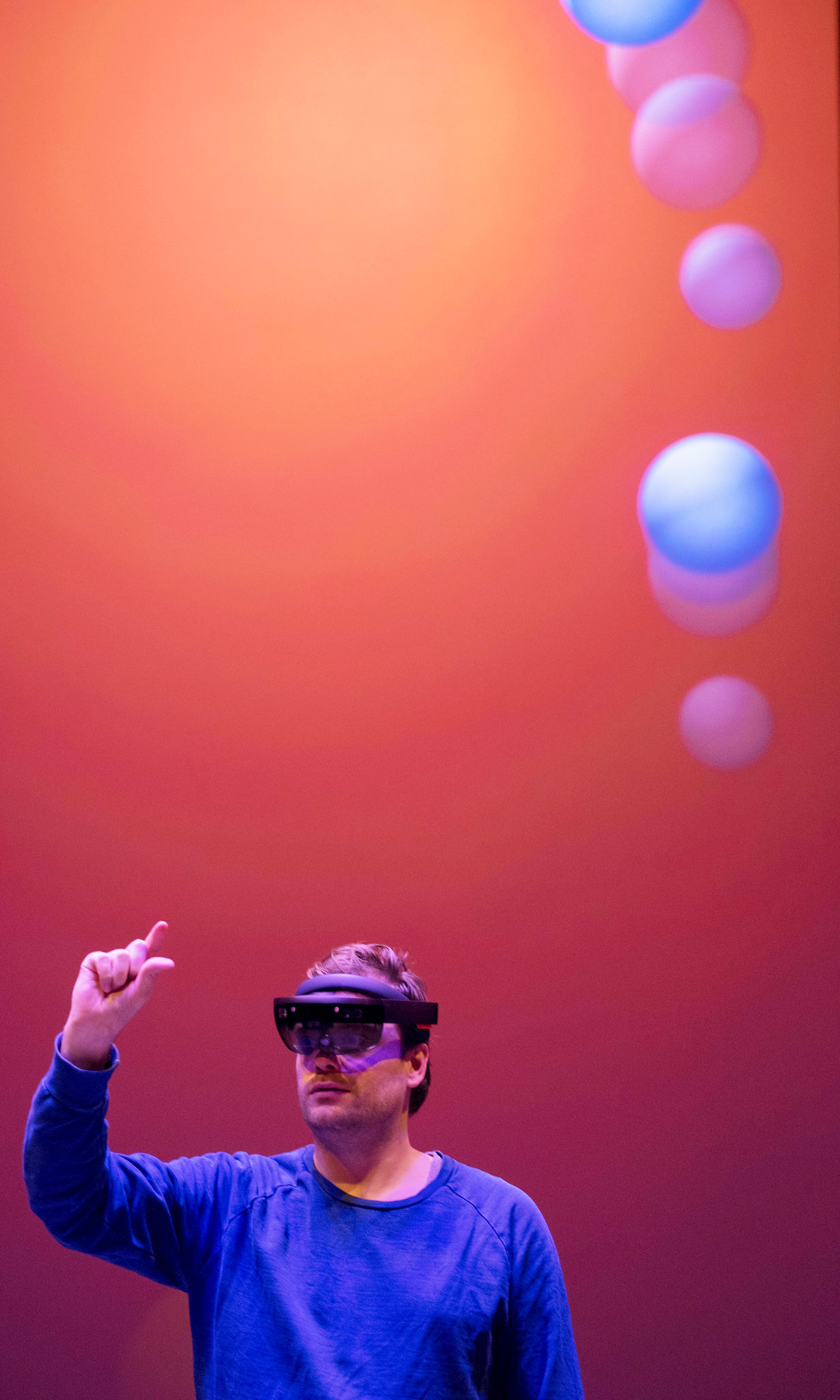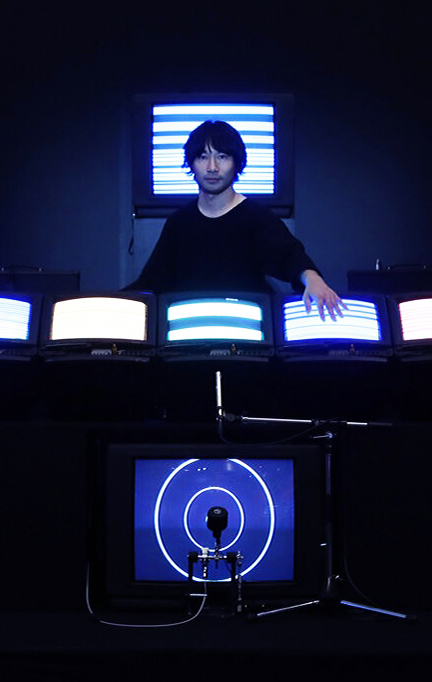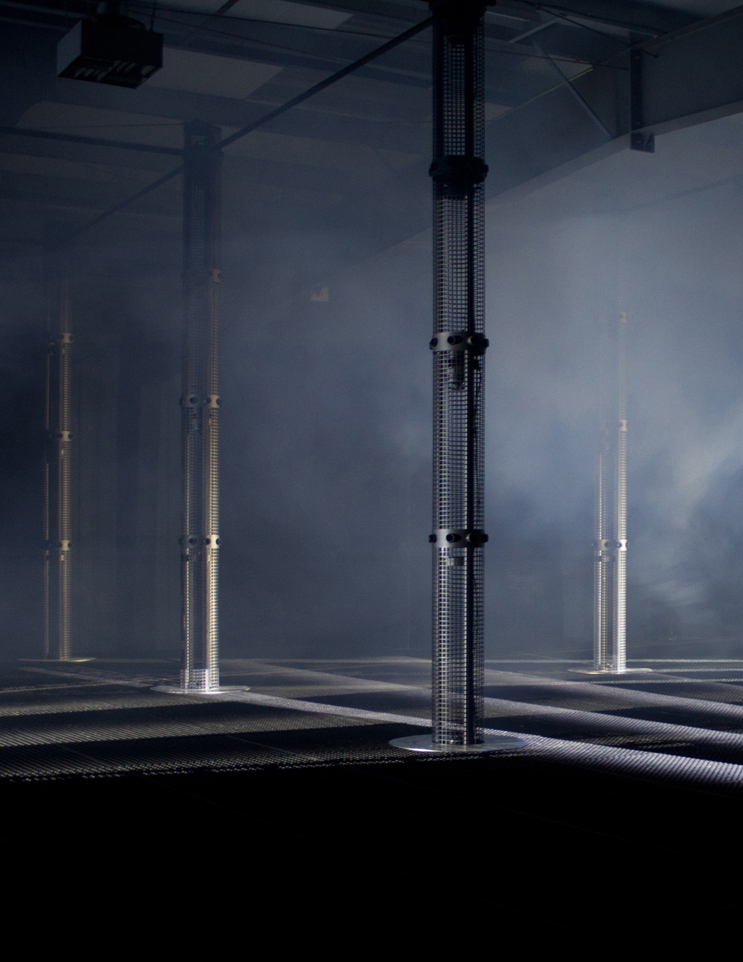
MEMO AKTEN
Simple Harmonic Motion study #5d
Behind the different incarnations, at the heart of the project lies the concept of creating complexity from simplicity. Through the use of custom software, a number of ‘agents’ are created and assigned a simple behavior. Each follow an extremely simple repetitive pattern of movement and sound. On their own, each agent is relatively monotonous, basic and mechanical. The repetition duration, motion and sound of each agent is precisely tuned such that the collection of all agents moving together, creates a unique, evolving and complex composition – both visually and sonically. The seed of inspiration comes from the motion of pendulums and other fundamental oscillatory phenomena which exhibit simple harmonic motion. The project extracts and amplifies these complex patterns, both through visual abstraction and emphasis; and also through sonifying the phenomena and creating musical patterns driven by the same equations that dictate the behaviour.






